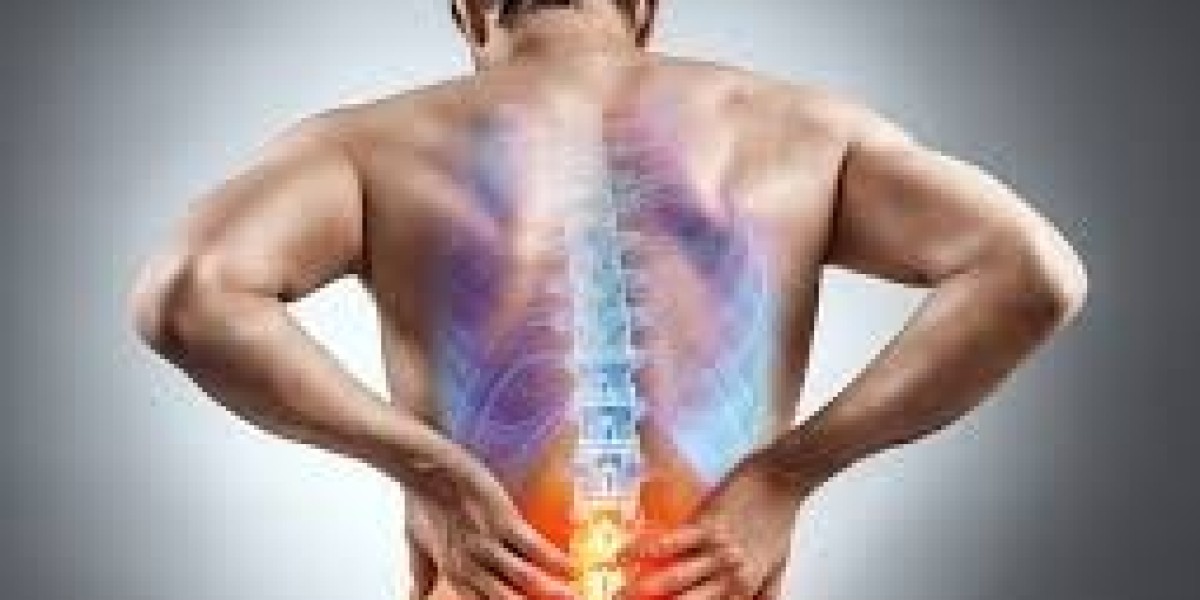Overview:
A universal human experience, pain is a necessary warning system alerting us to possible injury and guiding preventative actions. Although survival depends on pain, persistent or severe pain can seriously reduce one's quality of life. Development of efficient treatments and interventions depends on an awareness of the biological processes behind pain experience. This paper attempts to explore the several routes via which pain signals are handled in the human body, so clarifying the complexity of pain experience and possible directions of therapeutic intervention.
Foundations of Pain Perception:
Pain perception is the complicated interaction of sensory, emotional, and cognitive processes. Specialized nerve endings called nociceptors sense possibly dangerous stimuli such heat, pressure, or chemicals when tissue is damaged or threatened. These nociceptors translate these inputs into electrical signals that follow nerve fibers to the spinal cord and then rise to the brain.
The spinal cord is the gateway to the brain.
Once at the spinal cord, a network of neurons handles and modulates pain impulses. A vital gateway, the dorsal horn of the spinal cord amplifies, suppresses, or modulates incoming pain impulses before they reach the brain. Key in their transmission and modulation of pain signals, neurons in the dorsal horn emit neurotransmitters including glutamate, substance P, and GABA.
Relay Stations and Integration Centers: Ascending Pathways
Pain signals start from the spinal cord and travel multiple different paths to the brain. Among the main channels in charge of delivering nociceptive impulses to the thalamus, a central relay station in the brain, is the spinothalamic tract. Pain information is sent from the thalamus to several areas of the cerebral cortex where it is handled and felt as pain.
The Brain's Pain Matrix:
Perception of pain is related to a widespread network of brain areas sometimes referred to as the "pain matrix." Each of the somatosensory cortex, insula, anterior cingulate cortex, and prefrontal cortex in this network adds special qualities to the perception of pain. While the insula combines pain with emotional and motivating elements, the somatosensory cortex analyzes the sensory characteristics of pain including its location and severity. While the prefrontal cortex controls cognitive and attentional features of pain perception, the anterior cingulate cortex is very essential in assessing the unpleasantness of pain.
Control Mechanisms and Modulation
The degree of nociceptive input determines only one aspect of pain; other modulating processes also affect it. On pain transmission in the spinal cord, descending paths starting from the brainstem can have both inhibitory and facilitatory effects. Target of pharmaceutical treatments, endogenous pain modulating systems including the endorphin and serotonin systems help to control pain perception.
Plasticity and Maladaptive Transformations
Many times, maladaptive changes in the neurological system—including neural hyperexcitability, synaptic plasticity, and changes in neurotransmitter function—are linked to chronic pain problems. Even in the absence of continuous tissue damage, these alterations might lead to a chronic condition of increased pain sensitivity. Development of focused therapy for chronic pain syndromes depends on an awareness of the processes behind such maladaptive plasticity.
Therapeutic Methodologies and Clinical Implications:
A great variety of pharmacological and non-pharmacological treatments for acute and chronic pain problems have resulted from insights into the molecular processes of pain. Targeting many elements of the pain pathway, pharmacological treatments address central sensitization mechanisms, nociceptors, and neurotransmitter systems. By means of behavioral and psychological factors, non-pharmacological treatments include cognitive-behavioral therapy, physical therapy, and interventional techniques seek to alter pain experience.
Future Routines and Difficulties:
Though our knowledge of pain biology has advanced greatly, several obstacles still exist in the creation of sensible painkillers. Treatment success is seriously hampered by the variety of pain disorders, personal variation in pain experience, and complicated interaction of biological, psychological, and social elements. Future studies targeted at deciphering the complexity of pain pathways and creating individualized, interdisciplinary pain management strategies have great potential to enhance results for people suffering with pain.
Finish:
Pain perception is a complex phenomena controlled by complex biological processes spanning the periphery to the brain. Through the dissection of pain pathways, doctors and researchers can create more successful pain management and treatment plans. with use of a multimodal strategy combining knowledge from neuroscience, psychology, and medicine, we can aim to reduce suffering and enhance the quality of life for people afflicted with pain.






